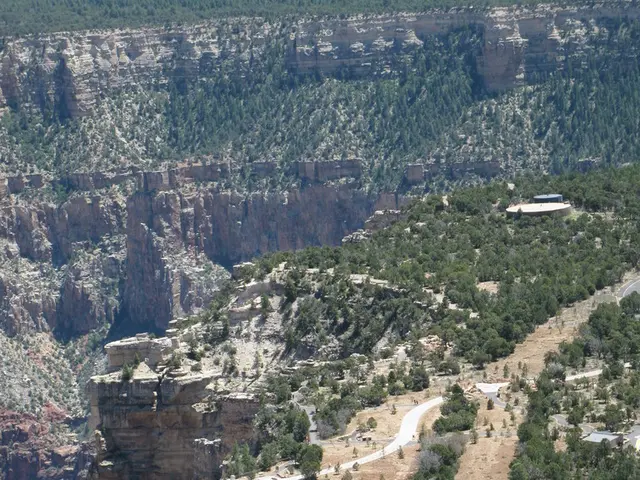Strategies for Minimizing Accidents for Kayakers, Watercraft Operators, and Swimmers within Padre Island National Seashore
Nestled along a breathtaking, 66-mile stretch of untouched shoreline along the Gulf of Mexico, the Padre Island National Seashore serves as a haven for one of America's last unblemished barrier islands. This narrow island teems with a unique coastal prairie ecosystem and attracts over half a million visitors annually, who come to partake in camping, beachcombing, fishing, boating, horseback riding, scuba diving, windsurfing, swimming, and witnessing Kemp's ridley sea turtle hatchling releases.
Visitors planning a trip to Padre Island must prepare accordingly, as the park lacks amenities like food, firewood, or fishing licenses within its boundaries. The nearest services are situated about 12 miles from the park entrance. Hazards abound on the island and its surrounding waters, including jellyfish, Portuguese man-of-war, stingrays, rattlesnakes, coyotes, mosquitoes, and ticks.
Boating is incredibly popular at Padre Island, especially for fishing. Most boaters utilize the Bird Island Basin Boat Ramp to access the shallow Laguna Madre, an expanse of water averaging just 4.5 feet deep. Boaters should exercise caution when navigating this area to prevent running aground. The maintained shipping channel of the Gulf Intracoastal Waterway runs along the park's western boundary, hosting regular barge and boat traffic in a channel with an average depth of 12 feet. Recreational boaters are reminded to remain vigilant and observe this traffic to avoid collisions.
Occasionally, small, soft-hulled boats launch directly into the Gulf of Mexico from the beach south of the 5-mile marker. Boaters attempting this should proceed with great care due to the unpredictable nature of the ocean waves. Before setting out, boaters should always check weather conditions, file a float plan, carry communication devices, and wear life jackets.
Kayaking is another engaging way to explore Padre Island National Seashore. While kayaking allows access to shallow areas inaccessible to motorized boats, it exposes participants to the elements. Kayakers should study wind and wave forecasts before setting out and always wear an approved life jacket. When possible, Paddlers are advised to travel with a companion or group, carry signaling devices such as a whistle, mirror, or flare, avoid venturing out during low visibility late afternoons, dawn, or night, bring ample drinking water, apply sunscreen, and secure gear to prevent loss.
Swimming can be irresistible in the park's warm Gulf waters, but caution is still essential. Swimmers should limit their activities to designated areas and never swim alone. Even experienced swimmers may find wavy conditions exhausting. Keep an eye out for marine life like jellyfish and stingrays that can deliver painful stings. Avoid swimming near fishing piers or jetties, where submerged debris poses a hazard. Alcohol and swimming do not mix, and children, inexperienced swimmers, and anyone not in robust health should wear a Coast Guard-approved lifejacket.
Whether boating off Padre Island or kayaking the Laguna Madre, maritime accidents can occur swiftly. From shallow water collisions to sudden weather changes, Gulf Coast waters present genuine risks. In nearby Houston, both recreational visitors and maritime workers face similar perils. If injured on the water, Houston maritime law may provide legal options for recovering damages.
By exercising sound judgment and adhering to basic safety guidelines, visitors can safely enjoy the plethora of outdoor opportunities available at Padre Island National Seashore. With pristine beaches, dunes, prairies, and coastal waters spanning 66 miles, there is ample space for exploration. By staying alert and taking precautions, everyone can embark on an adventure to remember.
- The Padre Island National Seashore, situated along a 66-mile stretch, offers a variety of activities including camping, beachcombing, fishing, boating, horseback riding, scuba diving, windsurfing, swimming, and witnessing Kemp's ridley sea turtle hatchling releases.
- Those planning a trip to Padre Island must be aware that there are no amenities like food, firewood, or fishing licenses within the park.
- Boating is incredibly popular at Padre Island, especially for fishing, using the Bird Island Basin Boat Ramp as the entry point to the shallow Laguna Madre.
- Boaters on Padre Island should exercise caution when navigating, check weather conditions, file a float plan, carry communication devices, and wear life jackets.
- Kayaking is another way to explore the park, but kayakers should study wind and wave forecasts, wear an approved life jacket, and travel with a companion or group when possible.
- Swimming in the park's warm Gulf waters can be irresistible, but swimmers should limit their activities to designated areas, avoid swimming alone, and be mindful of marine life and hidden hazards.
- Whether boating off Padre Island or kayaking the Laguna Madre, maritime accidents can occur; understanding Houston maritime law can provide legal options for recovering damages in the event of an injury.








